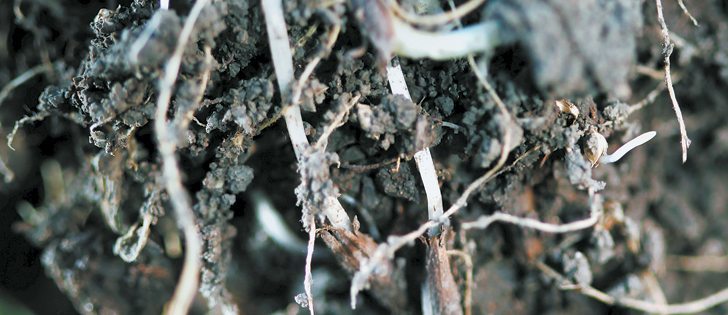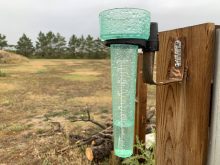Picture a granular fertilizer with a polymer coating that has a thin film of nanobiosensors that will release its nutrient payload only when the crop requests it.
“This is not science fiction, we are actually getting this to work,” said Carlton University PhD student Emily Mastronardi, who is developing smart release technology for large-scale applications.
“The nitrogen needs of a plant changes throughout the season,” she told the Canola Industry Meeting held in Saskatoon last month.
“This means we need a fertilizer that matches those needs and only be there when the crop can actually take it up, instead of being there the whole time, which can be lost to the environment.”
Read Also

Environmental farm group has Ottawa’s attention
In 2021, Farmers for Climate Solutions published a report on how Canada should reduce emissions from agriculture. Not long after, the federal government implemented most of the recommendations in the report.
The first step in this work is to identify signals that the plant emits when it needs nitrogen.
“If we can find that, then we can intercept and deliver nitrogen when a crop is actually asking for it,” she said.
Plants emit root exudates, which can be small carbon-containing compounds, amino acids, sugars and vitamins. Different crops emit different exudates.
Mastronardi said it’s been demonstrated that these root emissions control plant nutrient uptake and communicate with soil microbes. There are more root emissions in periods of low nitrogen presence.
“So our goal then is to identify these specific exudates that are important for nitrogen uptake so that we can intercept them and create that smart fertilizer that will release nutrients on demand.”
Carlos M. Monreal from Carleton found these exudates by determining when nitrogen demand increases during specific growth periods of wheat and canola and then used mass spectrometry to identify exudates that occur in the soil during these periods.
He identified 12 chemical signals that closely associated with crop nitrogen uptake. Some were crop specific, which showed a potential for designing crop specific fertilizer.
Monreal’s team then identified the signals it wanted to intercept and developed biosensors to detect them.
The lab where Mastronardi works is studying aptamers, which are single stranded oligonucleotides (short DNA or RNA molecules). The aptamers are synthetic and do not code for any organism.
“The reason we use them is be-cause they can fold into 3D nano-scale shapes and that allows them to bind targets with high affinity and selectivity,” she said.
“Some aptamers can distinguish between a single functional group on a molecule.”
The researchers used a process called systematic evolution of ligands by exponential enrichment (SELEX) to create the apta-mers.
“We synthesize in our lab a large pool,” she said.
“It’s like a DNA library of random sequences. We just picked a length, usually it’s between 40 to 80 bases long, and we synthesize a large random library. Then we incubate that library with our exudates of interest.”
The aptamers that bind with the exudates are amplified using a technology called polymerase chain reaction (PCR), which provides a more enriched pool for the target exudates. The cycle is re-peated until an aptamer is created with high affinity.
“If you know the downstream application you want to use your aptamer in, you can include that in your selection so that you have a chance of getting a very good aptamer that will work in your particular application,” she said.
A method called layer-by-layer deposition was used to create the smart aptamer films needed to encapsulate the fertilizer.
“What we do is alternate positive and negative polymers,” he said.
“They almost self assemble, just by dipping them into different charged polymers. Since DNA is negatively charged, we can substitute that for a negative polymer on the outside of the film, and then we just add a capping layer.”
However, the researchers needed the film to do more than just bind; they also needed it to be responsive.
As a result, they studied how the permeability of the film would change once the aptamer was bound to its target.
They found that the permeability of the film increased when the aptamer bound with the exudates, which allowed the fertilizer payload to be released. They also found that aptamers act as a structural support for the microcapsule, and target binding leads to microcapsule rupture.
This led the group to develop two systems of smart fertilizer, which will release nutrients on demand in slightly different ways.
The first system embeds the aptamer in the wall of a microcapsule. The permeability of the film is changed when exudates are re-leased indicating that a crop can take up nitrogen, and the payload is delivered.
The second system uses the aptamers in a microcapsule’s calcium carbonate core. Layers are built around the core, which can be dissolved when a signal is received by the exudates.
The DNA aptamer acts like scaffolding, holding up the layers. It binds when released and causes the microcapsule to burst, which then allows the nutrient load to be delivered.
Contact robin.booker@producer.com
















